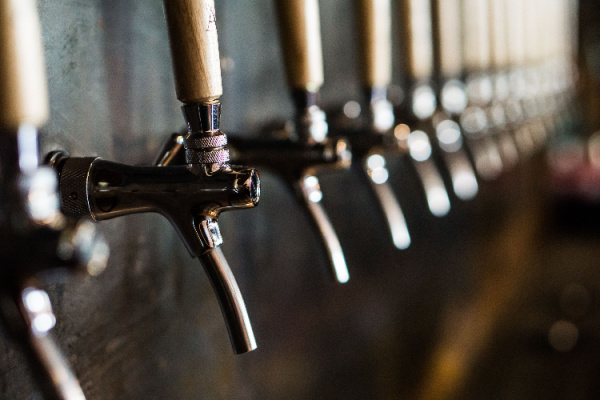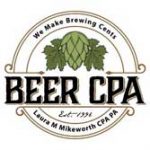Tapped Out — The Problematic Culture of Overdrinking When You Work in Alcohol

We came across a story by Mark LaFaro, Good Beer Hunting, that highlights a major opportunity in the Brewing and Taproom community. We’ve excerpted the article and the full article can be read here.
There were red flags at the outset about the drinking culture in the beer industry, but I was too drunk to see them. The interview for my first brewery job lasted almost five hours. It took place at the Blind Tiger, a famous craft beer bar in Manhattan, the conversation fueled by several pints of 7.3% ABV Green Flash West Coast IPA. A few months later, I was onboarding at the brewery with my manager, recalling the details of the interview with another coworker.
“I knew it was going well when I realized that we’d already been talking for four hours and ordered our fifth round of beer,” I said.
“Sixth,” my manager corrected me. “But don’t feel special—I did that with every interviewee. I was testing you to see how you handled your booze.”
Welcome to the beer business.
Joe Reyes, the Southeast regional sales director for non-alcoholic beer maker Best Day Brewing, tells similar stories from years prior, when he would employ this strategy and go drink with a potential hire in addition to a typical in-person interview process. Our experiences are not uncommon. Examples like this made it clear from the start of my career there was an ongoing pressure to try to “fit in” culturally in the alcohol industry, which meant honing a coveted skill of being able to drink heavily but still function. So, I drank. Hard. I got extraordinarily good at skirting that line between being a party animal and a professional. As my career and reputation grew, so did my alcohol tolerance.
But that tightrope walk has a steep learning curve. Gabriel Jiminez, a former industry professional, remembers when he first started as a salesperson for Revolution Brewing Company in Chicago.
“I’m typically a healthy person, but there was a lot of fitting in that needed to happen. Bar owners wouldn’t even talk to you unless you were drinking beer there,” he says of his experience. “My first day, on my first ride-along, on the side of supplier sales, I had three beers and a shot of tequila. And I wasn’t prepared for it, and I’m like, ‘I’m feeling this.’” Jiminez wound up sleeping at his brother’s house that night, too inebriated to make his way home.
On the other side of the bar, bar owners and managers say they feel the same pressure. Eddie Cullari, owner of Eddie’s Roadhouse in Warwick, New York, says he felt as if he didn’t have a choice to not drink. When sales reps with beer, wine, or spirits came calling, he believed it to be an obligation to try samples, regardless of whether he actually wanted to consume alcohol at that moment.
“Drinking was a part of my lifestyle,” he says. “To procure or curate a beer list, a beer program, is not something I could do without drinking. You are the host of a party, and it’s unfair to not be in the same realm as everyone else around you. It’s like I had to participate and include myself in the festivities.”
What’s left is a destructive cycle made difficult by presumption of habit and the idea that there are unspoken rules shared by everyone involved—if there’s alcohol and you work with it or around it, you drink.
As my career continued to develop within the industry, the line between “normal drinking” and alcohol abuse became blurred. I brushed off problematic drinking habits because I believed they were a function of my job. I was surrounded by successful colleagues who seamlessly folded a party-hard lifestyle into their work, and if I didn’t keep up, I would be left behind—in personal relationships and professional opportunities.
I’m not sure whether jobs in beer, liquor, and wine create or attract alcoholics. It’s probably a combination of both. I think I once had a healthy relationship with alcohol, but within a few years in the industry, my perception of “healthy” had become so skewed that I couldn’t see problems developing within myself. For me, craft beer became the perfect place to hide. I had unfettered access to my favorite form of self-medication, and despite a high tolerance for alcohol and a heavy drinking habit, I was surrounded by people who seemed to be capable of drinking even more.
“I can’t possibly have a problem,” I’d tell myself. “Just look at the people you work with, they have the real problem.”
The problem, of course, was that I did have a problem.
My depression, which I later learned was a function of untreated bipolar disorder, had gotten worse as my career progressed and alcohol intake increased. In 2016, for the first time ever, I was truly honest with my doctors about how much I was drinking: At least 30-40 beers a week. Within a year, I found myself in an intensive outpatient mental health program, desperate for relief. I was placed in a co-occurring program, which treats mental health disorders and substance misuse. This included attending Alcoholics Anonymous meetings and group therapy centered around substance misuse, in addition to regular group therapy sessions for depression.
But despite the diagnosis, I still didn’t think that I had a problem. In fact, I was almost offended and slightly indignant about it. After all, my drinking seemed damn-near moderate compared to my peers. It wasn’t until I had to talk out loud about my drinking in a group therapy session that I realized how bad things really were. “Hi, my name is Mark, and my drug of choice is alcohol. I work at a brewery.” I got a few chuckles from the group. Somebody snidely commented, “Yeah, Budweiser should pay me, too!”
“No, really, I work for a brewery.” Suddenly, the faces got a little more serious.
I didn’t know where to start, so the counselor running the group suggested that I share what a “heavy drinking day” at work might look like. A few weeks prior, I’d been at the brewery for a meeting, and had a particularly hard day of drinking, so I decided to talk about that.
-
We’d started the day by cracking open a bottle of whiskey at 9 a.m., passing it around and taking swigs as we each shared successes from our departments and markets.
-
A 11 a.m., several cases of beer were wheeled in on a hand truck to enjoy with lunch.
-
We continued drinking until the meeting concluded at 4 p.m., when we walked over to our taproom for more beers with our colleagues who worked in the brewhouse.
-
This was followed by an outing to a local bar, where we had beers, followed by dinner with several more.
-
After dinner, those of us from out of town reconvened at a casino near our hotel before the end of the night for—you guessed it—more beer.
I had been casually drinking for 16 hours straight.
When I was done talking, nearly everyone’s jaw was on the floor. The people in my group—the ones I thought had problems—seemed genuinely shocked. I had heroin addicts looking at me like I was hardcore. I uttered an excuse that was unfortunately common from myself and others: “Yeah, but you guys don’t understand,” I said. “I work in beer.”
Focusing on lower-ABV beer wasn’t necessarily a sign of progress, Cullari says: “It’s alcoholism meets age.” Eventually, a gluten intolerance is what provided Cullari the motivation he needed to approach drinking with moderation.
Others don’t have it so easy. In 2017, Reyes was diagnosed with F2 liver disease as a result of his heavy drinking. He could change his habits or face terminal consequences. In a post on LinkedIn, he listed one-liners he used to tell himself and others about his job and alcohol intake: “Die on the payroll,” “We’re here for a good time, not a long time,” and “Life is uncertain, don’t sip.” He was coping with humor until a doctor told him it was time to get serious.
Reyes eventually found a role as the vice president of sales at Tank Brewing, where he felt encouraged to build a culture of health among employees. During his time at Tank, he taught new hires that drinking is not an expectation on the job and offered free wellness and recovery resources like cryo treatments to his team.
Trying to get sober while working in alcohol is a challenging proposition. Worry about social stigma is one thing, but how can you excel in an industry you love if you can’t provide tasting notes, sensory analysis, or talk about a drink with experience? “It’s nearly impossible,” says Leischner, who tried to quit drinking while still working at a liquor store.
The hope is that along with rising wellness trends, acceptance of being “sober-curious,” and a variety of non-alcoholic options at stores and bars, alcohol-use disorder and sobriety move away from being taboo subjects. Professionals interviewed for this story didn’t recall getting formal training about alcoholism—a potential blindspot for industry insiders—but organizations like the Brewers Association now offer resources to members, including guides to recognize signs of substance abuse, how to create staff drinking policies, and ways to identify problem-drinking.
However, because overdrinking is so normalized across the industry, it can be that much harder to recognize when someone has an issue.
“I never had an intervention, because nobody was willing to admit I was an alcoholic,” says Lemoine, who also had trouble admitting it himself. And often, when help does come, it’s after things have reached a rock-bottom point. “Helping you get help at the end is not a good place to start,” he adds.
It took me two rock bottoms and several half-hearted attempts to finally find sobriety on May 12, 2022. My path has taken me back into the industry, most recently as a bartender at a brewery taproom. I’ve been open about my sobriety behind the bar, because I’m proud of it, and because it sparks a conversation worth having. De-stigmatizing sobriety and addressing alcohol use disorder head on can be challenging, but will help our friends and colleagues before they reach their own depths. Resilience requires vulnerability, but it also gives us the chance to lift each other up.
Attribution: Article Retrieved from Good Beer Hunting, written By Mark LaFaro .

Beer CPA – “We Give Craft Breweries More Freedom and Peace of Mind”
A Craft Brewery CPA Firm that’s Tech Savvy, Responsive, and Business Smart.
Photo Credit: Shutterstock



